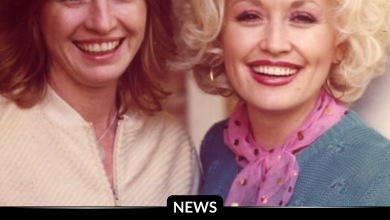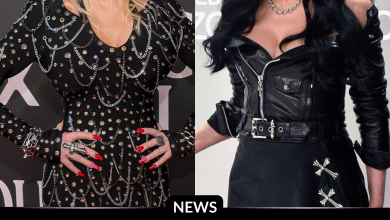Audrey Hepburn’s ‘Breakfast at Tiffany’s’ Role Almost Went to Marilyn Monroe – Here’s Why Capote Was Furious
OPINION: This article may contain commentary which reflects the author's opinion.
When we think of Breakfast at Tiffany’s, it’s impossible not to envision Audrey Hepburn, draped in a floor-length black dress, a cascade of pearls around her neck, and her gloved hands delicately holding a croissant. This iconic image, from the opening scene where Hepburn’s Holly Golightly steps out of a yellow taxi to gaze at Tiffany & Co.’s windows, has become one of the most recognizable in film history. Released in 1961, the romantic comedy directed by Blake Edwards secured Hepburn a career-defining role, earning her an Academy Award nomination. However, the casting of Hepburn in the role of Holly, though now inseparable from the film, was not the original vision of the story’s creator, Truman Capote.
Capote, who wrote the novella Breakfast at Tiffany’s in 1958, had a vastly different Holly in mind—one who was much closer to his own life experiences and the tragic fate of another Hollywood legend: Marilyn Monroe. While Hepburn’s portrayal of Holly Golightly is steeped in elegance, chic glamour, and a sophisticated air, Capote’s character was a far cry from the polished image Hepburn presented on-screen. Instead, Holly in the novella was a complex, deeply flawed woman with a troubled past that mirrored much of Monroe’s own life, and Capote, a close friend of Monroe’s, had always envisioned her as the perfect fit for the role.
The Holly Golightly Capote Created
In Capote’s novella, Holly Golightly is a far cry from the idealized vision presented in the film. Described as a young woman who endured significant hardship before moving to New York, Holly was an orphan from Texas, labeled a “hillbilly” who was taken in by a man named Doc Golightly, whom she was forced to marry when she was only 14. As Holly explains in the story, her life before the age of 13, including various sexual traumas, didn’t count. Her story was one of survival and reinvention, sustaining herself by dating wealthy men, though the precise nature of her earnings is left vague.
This character profile bears many striking similarities to Monroe’s own life. Like Holly, Monroe was born Norma Jeane Mortenson and grew up in poverty during the Depression era, eventually being exploited by older men. Both Monroe and Holly endured abuse and hardship, with Capote’s character reflecting elements of Monroe’s own troubled history. The description of Holly’s physical appearance—“strands of albino-blonde and yellow hair,” “large eyes, a little blue, a little green,” and “an upturned nose”—is almost an uncanny match to Monroe’s distinctive features. It’s clear why Capote, who was close friends with Monroe, believed she was the natural choice to bring Holly Golightly to life on screen.
Marilyn Monroe’s Refusal and Capote’s Disappointment
Despite Capote’s insistence on casting Monroe, the Hollywood icon ultimately turned down the role. Monroe, advised by her acting coach Paula Strasberg, felt that playing a character who was sexually promiscuous could damage her carefully crafted public image. Strasberg cautioned Monroe against taking on a “lady of the evening,” fearing that such a role would tarnish her status as a glamorous star. While Holly’s character in the novella may have hinted at being a prostitute, Capote’s writing imbued her with an air of innocence that set her apart from the hyper-sexualized roles Monroe was often cast in.
This decision disappointed Capote, who felt betrayed by Paramount for casting Audrey Hepburn instead of Monroe. Capote was quoted as saying, “Paramount double-crossed me in every way and cast Audrey.” Despite Capote’s reservations, Hepburn’s portrayal of Holly Golightly would go on to become the defining version of the character. Hepburn’s elegance, grace, and timeless beauty were integral to the film’s success and have since cemented her as the face of the film. Yet, one can’t help but wonder how the film would have differed had Monroe taken on the role.
Hepburn’s Holly Golightly: Glamour vs. Struggle
While Hepburn’s portrayal of Holly has become synonymous with glamour and sophistication, the character’s complexity in Capote’s novella was much darker and troubled. Hepburn’s Holly is effortless, embodying a chic, carefree lifestyle as she flits around Manhattan, seducing wealthy men and charming everyone she meets. The film’s adaptation, with its polished image and stylish costumes, focused more on the surface beauty of Holly’s life, while Capote’s character, with her troubled past and emotional scars, demanded a far deeper exploration of trauma and survival.
Hepburn’s Holly was aspirational—an embodiment of Hollywood elegance, with her iconic style and poise providing the film’s visual appeal. This version of Holly became an enduring symbol of beauty and grace, in stark contrast to Capote’s more emotionally complex and vulnerable character. Hepburn’s portrayal, though brilliant, overshadowed the nuances of Capote’s original creation, making it easy for audiences to overlook the more difficult aspects of Holly’s life.
The Hypothetical Monroe Version
It’s fascinating to imagine what a Marilyn Monroe-led Breakfast at Tiffany’s would have looked like. Monroe’s casting would have brought an entirely different energy to the character of Holly Golightly, one marked by vulnerability, sensuality, and the raw emotions that Monroe often imbued in her performances. With her troubled past mirroring Holly’s own, Monroe’s portrayal could have explored the depths of Holly’s pain, offering a more nuanced and perhaps tragic interpretation of the character. The film might have shifted in tone from a light romantic comedy to a deeper exploration of identity, survival, and self-worth.
Ultimately, Monroe’s decision to pass on the role in favor of protecting her image shaped the trajectory of Breakfast at Tiffany’s into the beloved film we know today. Audrey Hepburn’s impeccable elegance is so ingrained in the fabric of the movie that it’s hard to imagine anyone else in the role of Holly Golightly. Still, it’s a tantalizing thought to consider how Monroe, with her own complex beauty and troubled history, would have brought a new layer of depth to the character.
Conclusion
The story of Breakfast at Tiffany’s is as much about casting as it is about the character of Holly Golightly herself. Audrey Hepburn’s portrayal has become the stuff of cinematic legend, synonymous with fashion and grace. But in reality, Capote’s vision of Holly, rooted in hardship, trauma, and survival, was a far cry from Hepburn’s polished portrayal. The fact that Capote wanted Marilyn Monroe for the role reveals a deeper complexity in Holly’s character, one that could have fundamentally shifted the film’s tone and impact. While Hepburn’s Holly will always be iconic, it’s fascinating to consider the alternate version of Breakfast at Tiffany’s that could have been.



